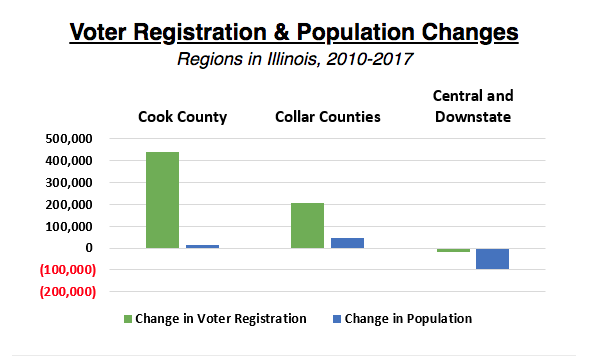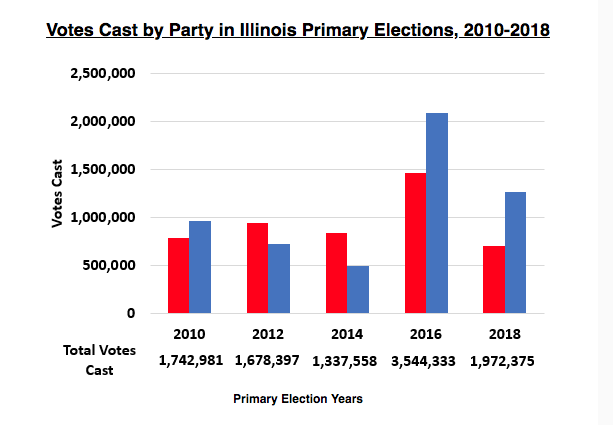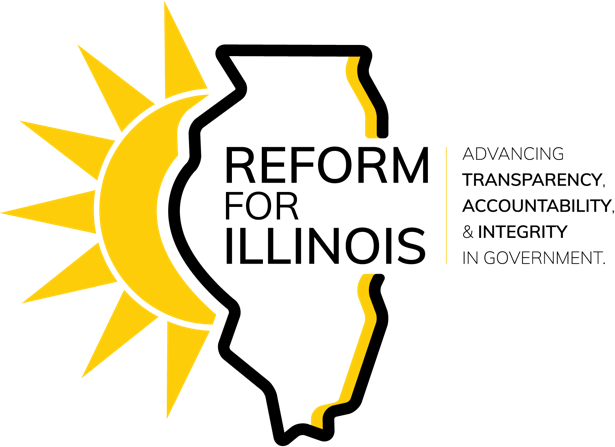How Illinois’ Population Loss Could Change State Politics

It’s a well-known story at this point: people are leaving Illinois, and taking their tax dollars with them. The state’s population has continually declined for the past four years, and Illinois was the most moved-from state in the U.S. in 2017. Various motives have been assigned to this out-migration, including political corruption, high taxes, and even the weather.
We know that Illinois will suffer financially if there are fewer taxpayers living in the state, but what are the other potential ramifications in politics and government? Illinois has already dropped from the 5th largest state to the 6th, eclipsed by Pennsylvania in 2017. This will likely cause Illinois to lose one, and possibly two, congressional seats, according to the experts.
Census data shows that the out-migration of Illinois residents has had a more substantive effect on population numbers in central and downstate areas, resulting in fewer residents today than in 2010. In addition, while voter registrations have been on the rise statewide, new voters are being registered primarily in Cook County and the collar counties, and downstate counties have actually experienced a loss of registered voters since 2010. These changes could have political implications for statewide candidates who rely on votes from key central and downstate areas.

People Are Moving Out of Downstate Illinois
While the state of Illinois is experiencing outward migration across all of its regions, there are other factors that lead to overall population change. For example, while Cook County and the surrounding collar counties have seen significant out-migration since 2010, their population totals have stayed static or seen modest gains due to births and enough new residents to offset those who left. Central and downstate counties, on the other hand, have seen a net loss of nearly 100,000 in residents since 2010.
Voter Registration is Up, But Not Everywhere
Voter registration hit its highest number ever in 2016, when Illinois reported 8.14 million in active registrations. Since then, registrations have declined slightly, with the State Board of Elections reporting 7.91 million voters registered after the recent March 20th Primary Election. While registration has been up overall, these numbers don’t tell the full story.
Cook County has reported 440,700 new registered voters since 2010, while central and downstate counties experienced a net loss of 16,800 voters during the same time period. While some counties in the region experienced gains, at least 61 central and downstate counties have showed losses in voter registration since 2010.
In Illinois politics, central and downstate voters are a key base for Republican candidates running statewide. The fact that these counties are experiencing losses in population and registered voters, compared to modest gains in Cook County and the suburbs, could change the makeup of statewide voting blocs in future elections.

Republican Voter Turnout Low in 2018
There are always a mix of factors that lead to increases and decreases in voter turnout. However, Democratic turnout in the 2018 Primary Election was higher than 2010 and 2014, while Republican turnout was at its lowest in that time, with only 703,000 GOP voters casting a ballot in 2018. Still, a direct correlation cannot be drawn between this turnout decrease and losses in downstate population and voter registrations. With an additional major gubernatorial candidate and a very competitive Attorney General race on the Democratic side, there are certainly many factors to explain why more Democrats headed to the polls this March.
Whether or not downstate population losses affected GOP voter turnout, or could do so in the future, data shows that Illinois’ issues with out-migration have disproportionately affected central and downstate areas. Because Illinois party politics is often defined by significant regional ties, this geographically-based population loss and decrease in voter registrations could change the dynamic of future statewide elections.
Back
